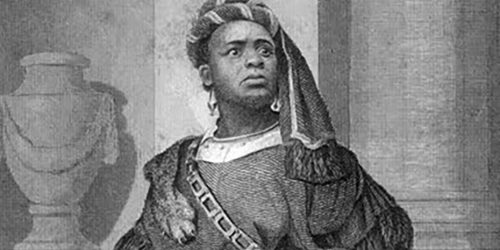The Amphitheatre on Spring Gardens in 1819 and its connection to the Peterloo Massacre

This is the earliest picture of the amphitheatre in 1819 long before it became the Queen’s theatre. In 1810 Robert Bradbury re-opened this as The Bradbury Amphitheatre which by 1819 had changed its name to the Minor Theatre.
It was situated on the corner of Spring Gardens and Fountain Street, with its main entrance on Fountain Street.
At present I am cataloging the theatre playbills and came across this very interesting one for an amateur performance in aid of of a Public Charity. It seems to have been given permission by Colonel L’Estrange, who a few months earlier had given the order to attack the people and rescue the Manchester and Salford Yeomanry in the Peterloo Massacre.

What really caught my attention was that it was in aid of The Manchester and Salford Lock Hospital and Asylum. I was intrigued by this as I had never come across this before. On further investigation I discovered it was the Manchester and Salford Lock Hospital and Dispensary which was founded for patients with venereal disease. It was an independent voluntary hospital which opened in 1818. The Lock Hospital occupied two houses in Cumberland Street. The Hospital lacked popular support due to the nature of the cases it took, and often struggled financially. Attempts to establish an asylum for prostitutes failed, then the Ladies Committee established the Manchester and Salford Asylum for Female Penitents. This was an independent asylum, but the two charities collaborated closely. In 1823 the Hospital moved to cheaper premises in Bond Street, then to Lloyd Street in 1832, and again in 1843 to premises on Deansgate. In 1873 the Hospital finally acquired a large site in Duke Street which was off Liverpool Road, where it remained. There was a slight improvement in the financial position by the 1850s when an appeal resulted in the opening of a convalescent ward and workroom for female in-patients. This possibly reflected changing public attitudes, particularly with regard to prostitution. In an attempt to increase public support, the name of the Hospital was changed in 1878 to Manchester and Salford Lock and Skin Diseases Hospital. Separate premises were taken for the treatment of skin diseases in Dale Street in 1884, and four years later the two branches separated completely. The Hospital reverted to its original name in 1890. The Hospital remained a small institution, and could not address satisfactorily the huge problems of venereal disease in an ever increasing population. In 1916 the hospital became an approved institution. This development supported the work of the Hospital and enabled it to build a male inpatients ward in cottages on Stone Street. The name of the Hospital was changed again in 1920, to St Luke’s Hospital. No reference to venereal disease remained.
Another interesting fact was that prostitution in 1820 did not just refer only to women who sold their bodies for sex. It was more often to refer to women who were living with men outside of marriage, women who had had illegitimate children, or women who perhaps had relations with men, but for pleasure rather than money.
An amazing find about the good people who at that time wanted to help these ladies of the night or day and try to reform them!!


I found your website from Google and also I need to state it was a wonderful locate.
Thanks!
Thank you so much I really am glad that you are enjoying my posts and I will continue hopefully to keep up the interesting facts
Crikey. Just read about Ira Aldridge and the theatre in Spring Gardens after seeing your tweet. So interesting.
I’m currently researching a book about my g grandmother’s sister, Marie Longmore. I wonder if you have come across her name. She played at the Queen’s Theatre in the 1860’s.
Isn’t theatrical history brilliant?
Best wishes
Rosie
Hi Rosie
so glad tou enjoyed my blog about Ira Aldridge. The more I researched him the more I more fascinating I found him.
When I can get back into Central Library Archives + I will try to see if I can find out anything about her. If you have the time and live in Manchester you can request to look at the theatre playbills for the Queens Theatre and read through them. They are so interesting
Many thanks again
Marilyn
Hi,
I have been looking for the history of the Minor Theatre. Thank you for this article, helpful to undertsand where it was and its complicated history. I think the change of the name to Minor Theatre could be earlier. See e.g. Manchester Mercury Tuesday 20 May 1817 p.4 for the advert of the performance by Sir Girmondi’s Performing Dogs. Have you come across for any performances involving dancing in Manchester theatres between 1815 – 1825? I am looking for further information about Mr Power who could be a dancer from Covent Garden residing in Manchester. I came across his name as the organiser of the Grand Fancy Dress Ball in December 1820 in Minor Theatre where he perfromed Spanish Bolero. Thanks.
Hi Alena
There are lots of programmes from the Minor Theatre from 1820 in which Mr Power performed. I haven’t checked yet but I think there ae also more amongst my ditigised programmes from Manchester Central library archives + Also I remember seeing the Grimoldi performing Dogs on a playbill but I’ll have to check properly, maybe tomorrow and I will let you know more.
Kind regards
Marilyn